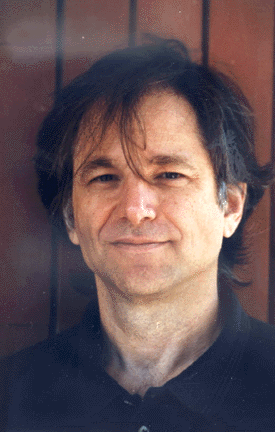 Leonard Adlemanlen adlmen [CC BY-SA 3.0 (https://creativecommons.org/licenses/by-sa/3.0)]
Leonard Adlemanlen adlmen [CC BY-SA 3.0 (https://creativecommons.org/licenses/by-sa/3.0)]
In today’s fast-paced world we rarely get a chance to find out how and why things happen. Instead we just hear about the results. In almost all events today, there is someone who is working in the shadows, from the people who prompt lines in plays, to those who organize charity events. But the people who do all these things, without whom the events would fall apart, aren’t recognized publicly as being important. That’s why my hero is someone who has worked in the shadows to benefit science, knowing that while technologies are never forgotten, the people whose hard work provided them to man, are.
Born on December 31, 1945, Leonard Adleman was to become a theoretical computer scientist who would eventually unlock one of the many secrets of DNA. He went to college at the University of Southern California at Berkeley. He received his bachelor’s degree in 1968, and later his Ph.D. in 1976. He has given us two important discoveries during his work so far, which consist of his RSA cryptosism and his major work where, by using DNA, he can produce the solution of any “traveling salesman” problem.
Adleman worked on the RSA cryptosism in the year 1977. The name RSA is the last initials of three partners, Rivest, Shamir, and Adleman. Rivest and Shamir had been attempting to create an encryption which hackers would be unable to break. However, they needed someone who would be able to test how hard it was to break the encryptions, and that is where Adleman came in. After Rivest and Shamir wrote the codes, they would have Adleman try to crack them. The three continued that process until there was a code that Adleman couldn’t figure out. The RSA encryption that they created is still used today in our everyday e-mails. However, RSA requires more time to encrypt the message, so in situations, such as war, when information needs to be transferred rapidly, RSA is not used, but rather a faster and less effective encryption is used. In 2002, they were awarded the AMC Turing Award.
Adleman’s other work was with DNA and the “traveling salesman” problem. The “traveling salesman” problem is when you have a series of cities and the traveling salesman wants to pass through all the cities, but only each city once. Adleman came up with an idea to use DNA as a sequence to create the path between the cities. Adleman would give each city a random sequence of nucleotides (A, T, C, and G, representing Adenine, Thymine, Cytosine, and Guanine) and then by running DNA through several elimination style tests, would produce the correct sequence of nucleotides and thus the correct path. This work has shown researchers everywhere that DNA can be used to solve problems, and may soon become a key component in problem solving strategies.
Many people who are reading this right now have never even heard of Leonard Adleman -- but he has been hard at work to develop the things that influence our everyday lives. A major part of many American lives today is e-mail, which has to be encrypted so that terrorists and other countries will be unable to get information from our country. Leonard Adleman is my hero because he has worked to improve our everyday lives, and perhaps with too little credit for doing so. I suppose that ultimately we see a part of ourselves in our heroes, a part that makes us feel like we could be like them, and that, just maybe, we too are remembered as heroes to someone else -- because as long as you are remembered, you live forever.
Page created on 7/1/2004 12:00:00 AM
Last edited 10/28/2024 12:56:16 PM
